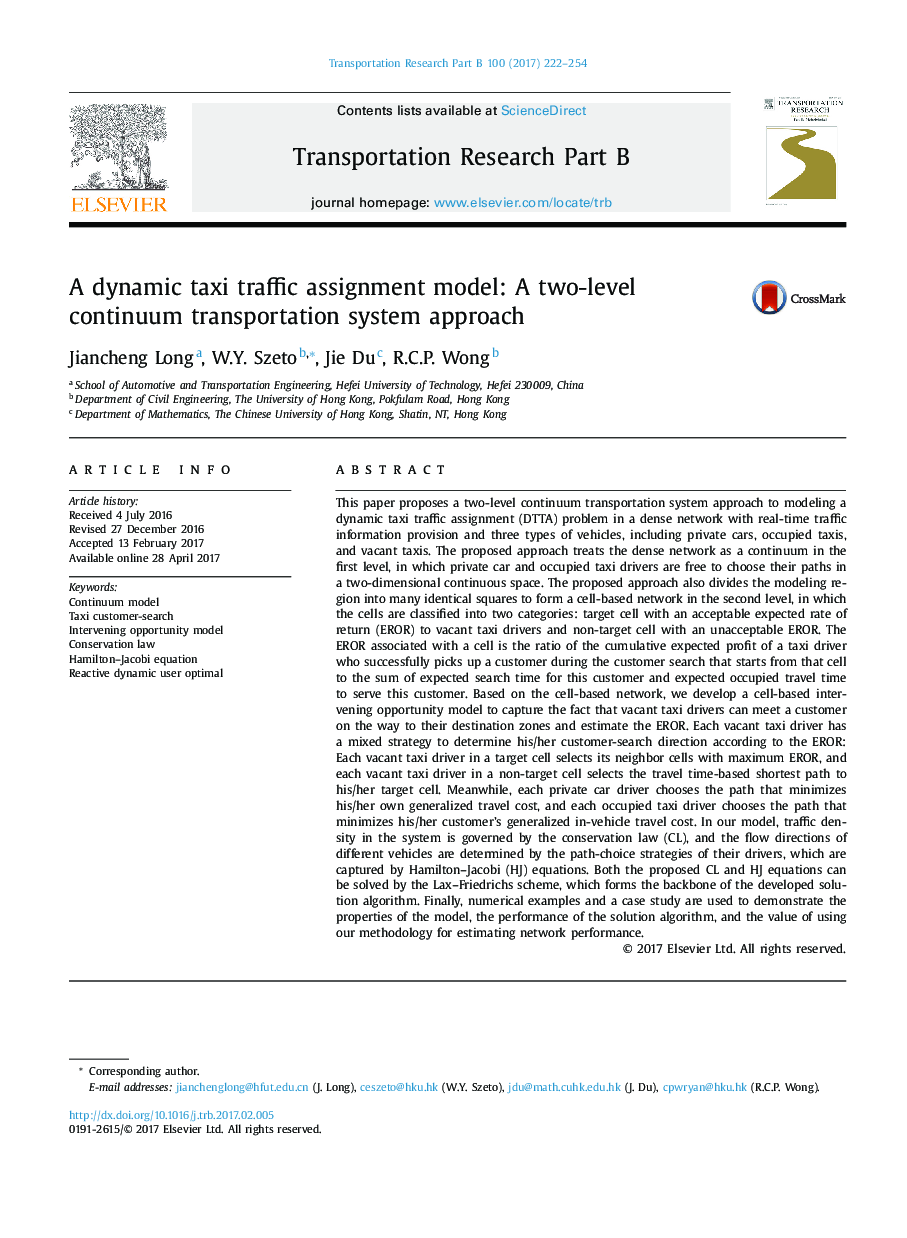| Article ID | Journal | Published Year | Pages | File Type |
|---|---|---|---|---|
| 5127039 | Transportation Research Part B: Methodological | 2017 | 33 Pages |
â¢Examine a dynamic taxi traffic assignment problem with real-time traffic information provision.â¢Propose a two-level continuum transportation system approach to modeling the problem.â¢Introduce the concept of expected rate of return to model the local customer-search of taxi drivers.â¢Propose a tolerance-based path choice strategy for vacant taxi drivers.â¢Use reactive dynamic user-optimal strategies for occupied taxi and private car drivers.â¢Present a case study to illustrate the properties of our model.
This paper proposes a two-level continuum transportation system approach to modeling a dynamic taxi traffic assignment (DTTA) problem in a dense network with real-time traffic information provision and three types of vehicles, including private cars, occupied taxis, and vacant taxis. The proposed approach treats the dense network as a continuum in the first level, in which private car and occupied taxi drivers are free to choose their paths in a two-dimensional continuous space. The proposed approach also divides the modeling region into many identical squares to form a cell-based network in the second level, in which the cells are classified into two categories: target cell with an acceptable expected rate of return (EROR) to vacant taxi drivers and non-target cell with an unacceptable EROR. The EROR associated with a cell is the ratio of the cumulative expected profit of a taxi driver who successfully picks up a customer during the customer search that starts from that cell to the sum of expected search time for this customer and expected occupied travel time to serve this customer. Based on the cell-based network, we develop a cell-based intervening opportunity model to capture the fact that vacant taxi drivers can meet a customer on the way to their destination zones and estimate the EROR. Each vacant taxi driver has a mixed strategy to determine his/her customer-search direction according to the EROR: Each vacant taxi driver in a target cell selects its neighbor cells with maximum EROR, and each vacant taxi driver in a non-target cell selects the travel time-based shortest path to his/her target cell. Meanwhile, each private car driver chooses the path that minimizes his/her own generalized travel cost, and each occupied taxi driver chooses the path that minimizes his/her customer's generalized in-vehicle travel cost. In our model, traffic density in the system is governed by the conservation law (CL), and the flow directions of different vehicles are determined by the path-choice strategies of their drivers, which are captured by Hamilton-Jacobi (HJ) equations. Both the proposed CL and HJ equations can be solved by the Lax-Friedrichs scheme, which forms the backbone of the developed solution algorithm. Finally, numerical examples and a case study are used to demonstrate the properties of the model, the performance of the solution algorithm, and the value of using our methodology for estimating network performance.
